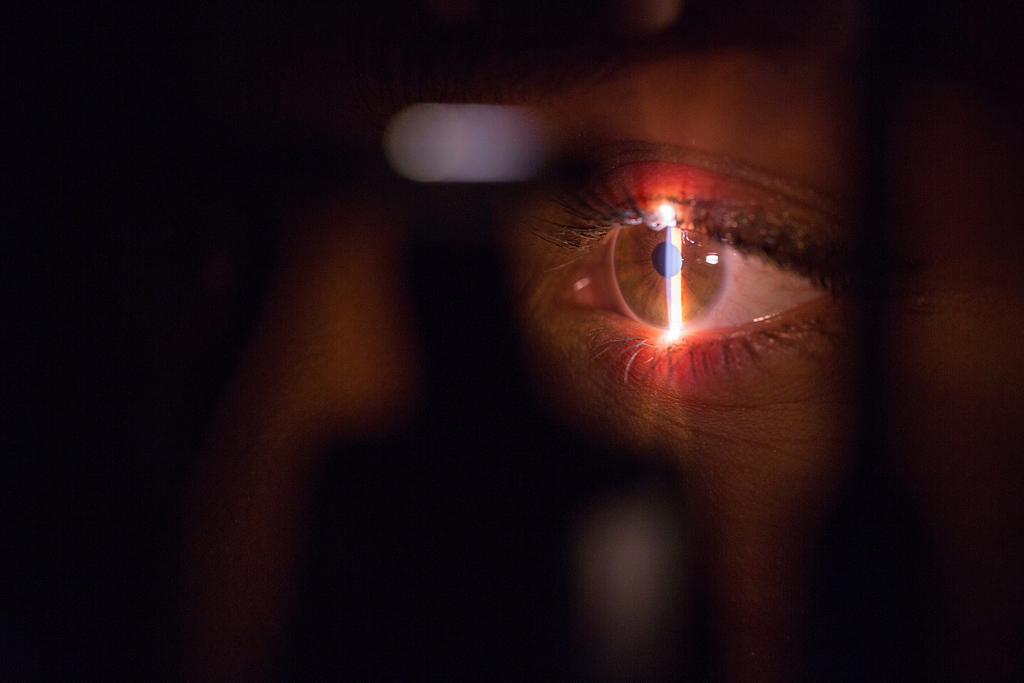.jpg?font_size=default)
Measuring the intraocular pressure (IOP) not only in sitting, but also in supine position, may help to identify the 24-hour IOP characteristics of your glaucoma patient
The Science behind the Tip It is well known that each patient has an individual circadian IOP pattern. Studies have shown that up to two thirds of...
February 28, 2018

The Iridocorneal Endothelial Syndrome
Author(s): Silva L (1), Najafi A (2), Suwan Y (3), Teekhasaenee C (4), Ritch R (2) 1 Einhorn Clinical Research Center, The New York Eye and Ear...
February 28, 2018

Anesthetic Preconditioning as Endogenous Neuroprotection in Glaucoma
Author(s): Chou TH (1), Musada GR (2), Romano GL (3), Bolton E (4), Porciatti V (5) 1 Bascom Palmer Eye Institute, University of Miami Miller...
February 28, 2018
.jpg?font_size=default)
Treatment of ischaemic central retinal vein occlusion with prophylactic anti-VEGF injections reduces the risk of neovascular glaucoma, but careful long-term monitoring for ocular new vessels remains essential
The Science behind the Tip Approximately 20% of central retinal vein occlusions (CRVO) are ischaemic and of those, 45% develop neovascular...
January 31, 2018

Detecting Visual Field Progression
Author(s): Aref AA (1), Budenz DL (2) 1 Illinois Eye & Ear Infirmary, University of Illinois at Chicago College of Medicine, Chicago, Illinois....
January 31, 2018

ASK1 in neurodegeneration
Author(s): Guo X (1), Namekata K (2), Kimura A (2), Harada C (2), Harada T (2) 1 Visual Research Project, Tokyo Metropolitan Institute of Medical...
January 31, 2018
.jpg?font_size=default)
OCT measurement of the retinal nerve fibre layer is useful for detecting progression in early glaucoma
The Science behind the Tip Both visual field testing and optical coherence tomography (OCT) measurements can be used to detect glaucomatous...
December 31, 2017

Multiple Temporal Lamina Cribrosa Defects in Myopic Eyes with Glaucoma and Their Association with Visual Field Defects
Author(s): Sawada Y (1), Araie M (2), Ishikawa M (3), Yoshitomi T (3) 1 Department of Ophthalmology, Akita University Graduate School of Medicine,...
December 31, 2017
.jpg?font_size=default)
Bleb encapsulation after trabeculectomy can be successfully treated by using aqueous suppressant treatment for a short period
The Science behind the Tip Bleb encapsulation may occur 2 to 6 weeks after trabeculectomy, when an elevated, tense, dome-shaped bleb develops with...
November 30, 2017

Rates of Local Retinal Nerve Fiber Layer Thinning before and after Disc Hemorrhage in Glaucoma
Author(s): Akagi T (1), Zangwill LM (2), Saunders LJ (2), Yarmohammadi A (2), Manalastas PIC (2), Suh MH (3), Girkin CA (4), Liebmann JM (5),...
November 30, 2017

Retinal Astrocytes and GABAergic Wide-Field Amacrine Cells Express PDGFRα: Connection to Retinal Ganglion Cell Neuroprotection by PDGF-AA
Author(s): Takahama S (1), Adetunji MO (1), Zhao T (2), Chen S2, Li W (2), Tomarev SI (1) 1 Section on Retinal Ganglion Cell Biology, Laboratory of...
November 30, 2017
.jpg?font_size=default)
A patient who presents with raised intraocular pressure or glaucoma and distended episcleral veins in one eye needs to be investigated for a spontaneous carotid – cavernous fistula
The Science behind the Tip A carotid – cavernous sinus fistula is an abnormal vascular communication between the carotid artery system and the...
October 31, 2017

Peptides of the variable IgG domain as potential biomarker candidates in primary open-angle glaucoma (POAG)
Author(s): Schmelter C (1), Perumal N (1), Funke S (1), Bell K (1), Pfeiffer N (1), Grus FH (1) 1 Department of Experimental and Translational...
October 31, 2017

Genetic correlations between intraocular pressure, blood pressure and primary open-angle glaucoma: a multi-cohort analysis
Author(s): Aschard H (1), Kang JH (2), Iglesias AI (3), Hysi P (4), Cooke Bailey JN (5,6), Khawaja AP (7), Allingham RR (8), Ashley-Koch A (9), Lee...
October 31, 2017

Successful optic nerve regeneration in the senescent zebrafish despite age-related decline of cell intrinsic and extrinsic response processes
Author(s): Van Houcke J (1), Bollaerts I (1), Geeraerts E (1), Davis B (2), Beckers A (1), Van Hove I (1), Lemmens K (1), De Groef L (3), Moons L...
October 31, 2017
.jpg?font_size=default)
Glaucoma associated with congenital aniridia is difficult to treat, but tube-shunt drainage devices offer the best results
The Science behind the Tip Congenital aniridia is a rare bilateral developmental disorder which is inherited in an autosomal dominant fashion in...
September 30, 2017

Rates of glaucomatous visual field change after trabeculectomy
Author(s): Baril C (1), Vianna JR (1), Shuba LM (1), Rafuse PE (1), Chauhan BC (1), Nicolela MT (1) 1 Department of Ophthalmology and Visual...
September 30, 2017

Mitochondrial dysfunction in ocular disease: Focus on glaucoma
Author(s): Kamel K (1), Farrell M (2), O'Brien C (3) 1 Institute of Ophthalmology, Mater Misericordiae University Hospital, Dublin, Ireland. 2...
September 30, 2017
.jpg?font_size=default)
In a young patient with acute congestive angle closure or recurrent angle closure in the presence of a patent laser iridotomy, the underlying cause is usually plateau iris configuration
The Science behind the Tip Plateau iris configuration is characterised by a closed anterior chamber angle in association with a flat iris plane and...
July 31, 2017

Risk Factors for Rapid Glaucoma Disease Progression
Author(s): Chan TCW (1), Bala C (2), Siu A (3), Wan F (3), White A (4) 1 University of Sydney, Sydney, Australia. 2 Macquarie University, Sydney,...
July 31, 2017

Interleukin-6 Deficiency Attenuates Retinal Ganglion Cell Axonopathy and Glaucoma-Related Vision Loss
Author(s): 1 Neuroscience Graduate Program, Vanderbilt UniversityNashville, TN, United States. 2 Department of Ophthalmology and Visual Sciences,...
July 31, 2017
.jpg?font_size=default)
The chronic use of prostaglandin analogues may lead to a modest underestimation of IOP when measured by Goldmann applanation tonometry
The Science behind the Tip Corneal hysteresis is a biomechanical property of the cornea relating to its elasticity. The measurement of corneal...
June 30, 2017

Mitochondrial dysfunction in ocular disease: Focus on glaucoma
Author(s): Kamel K (1), Farrell M (2), O'Brien C (3) 1 Institute of Ophthalmology, Mater Misericordiae University Hospital, Dublin, Ireland. 2...
June 30, 2017

Regulation of intraocular pressure by microRNA cluster miR-143/145
Author(s): Li X (1,2), Zhao F (3,4), Xin M (5), Li G (6), Luna C (6), Li G (1), Zhou Q (4), He Y (2), Yu B (4), Olson E (7), Gonzalez P (6), Wang S...
June 30, 2017
.jpg?font_size=default)
In a patient with glaucoma who has unexplained hair loss, stop topical beta-blocker treatment
The Science behind the Tip Beta adrenergic receptor blocking eye drops are often used to reduce the intraocular pressure. Because of absorption...
May 31, 2017




.jpg?font_size=default)
.jpg?font_size=default)


.jpg?font_size=default)

